
Original art, borrowed idea.

Original art, borrowed idea.

The music industry is arguably at its lowest point in modern history. Meaningless, tasteless, mass-produced pop songs make up 90% of what’s played on the radio, and the majority of current musical icons are spoiled talentless brats who never had to work for their fortunes. They don’t write their own songs, can’t sing them live, and barely even have to try in the studio. Unfortunately, many contemporary labels, loosely referred to as the current music industry, are not helping this, as they are looking not for artists, but for models to make famous while they get the actual music from other sources.
If you’ve ever found yourself thinking that all modern music somehow sounds the same, you’re not wrong. First off, most pop artists’ songs are written by a very small number of people, meaning that one person’s work can be found over many artists’ albums. Max Martin, for example, wrote countless #1 hits for dozens of artists over the past few decades including Ariana Grande, Katy Perry, Justin Beiber, Taylor Swift, and Britney Spears. You’ve probably never heard of him, since he doesn’t actually perform his songs but instead sells them to other artists, quietly making a fortune out of his talent while letting others reap the fame. Feel free to look him up or check out this list of songs he wrote. In addition, autotune, both live and in the studio, can make any two singers sound nearly the same. Since many pop artists are manufactured celebrities that lack natural talent, autotune is used heavily to compensate, at the expense of making many artists sound like slightly different words coming from the same robot–which, in a way, is literally true.

You may wonder how they can get away with that. Surely no one can be fooled into thinking that stereotypical autotuned voice is natural, right? Well, maybe. Some people don’t even realize that the sound is autotuned and genuinely think that it’s just a fun effect, while others know and just don’t care. It all comes down to exploiting a basic element of human psychology: the need for familiarity. Most new pop songs are the same style as the songs people grew up with, as they are written by the same people and performed in a similar voice. People find comfort in things that are familiar and enjoy things that are slightly new, and now the industry has the means of supplying them with nearly infinite amounts of just that.
Even if someone managed to find the few genuine pop artists out there who write their own music, record it with their own voice, and perform it live without a recording, and the said person chooses to listen to these artists, the industry has its ways of keeping even the most rebellious listeners in line. Labels find it profitable to invest in their songs to be played all over the radio, in stores, in malls, in public places, on TV, in commercials, and just about anywhere else you don’t want to hear it, because simply due to the way our brains and ears work, if someone hears a song that many times it becomes wedged in the listener’s subconscious memory as a comforting and familiar sound, forcing them to eventually get to like it. How many annoyingly catchy songs are there that you hated at first but heard so often that you like now?
In the last few decades, this cheaply produced, artificially popularized, relentlessly repetitive tasteless unmusical diarrhea has slowly but surely taken over the scene from artists with genuine skill and artistic talent, and there doesn’t seem to be a change happening any time soon. The next step may be to have literal robots making music, and live concerts as they used to be may die out entirely. Seeing a popstar lipsync to a backing track is dull enough compared to a genuine performance–the point of modern pop is to sound perfect, which the complete antithesis of the idea of a live show. There is little hope of a comeback of the old scene or another Micheal Jackson-like talent emerging in pop, ever. Pop just isn’t what it used to be. It’s no longer art; it’s a machine. Live music, and with it genuinely talented artists, has been crushed by the shit-spitting factory of modern pop.

While there is profit in horseshit, quality will remain hard to find.


Hotels are never cheap. RVs do chug gas but new RVs’ fuel economy is improving every year, and even with gas, water, and electricity, it can save a lot of money over hotels. Campsites can be expensive, but that’s only necessary if you need to empty tanks, and many don’t charge for that if you don’t stay overnight. If you go off the grid you can stop wherever you like, and places like Walmart and most truck stops allow you to park overnight at no cost.

It’s no secret that cheap hotels can have bed bugs, dog fur, dirty sheets, and the stench of cannabis and bodily fluids. Many aren’t cleaned very systematically, some are covered in a layer of grime, and some are populated by spiders, cockroaches, and other distasteful critters. An RV, on the other hand, can be cleaned as often as necessary and can be kept a lot more sanitary over the years; plus you’re the only one using it, so you know exactly how clean or dirty it is.
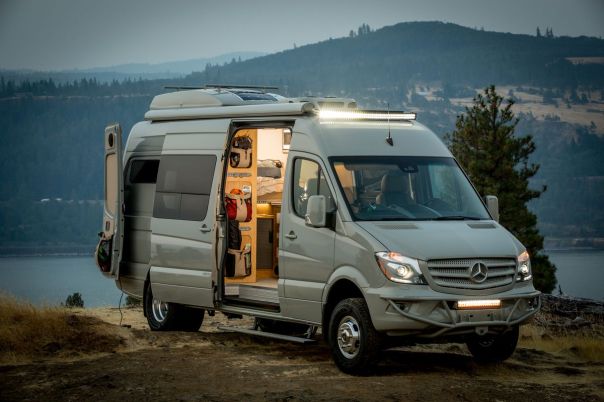
While RVs are often thought of as cramped, that’s comparing them to houses. Compared to cars, they fit a lot more stuff, including large items like bikes and kayaks if you tie them on top. Class As can be more spacious than most hotel rooms, and even smaller ones can be quite comfortable. In addition, there’s no careful packing necessary–unlike road tripping in a car, there’s no need for suitcases and bags for everything in an RV, and you’re free to bring a lot more stuff.

Camping can limit your destinations depending on temperature, rain, bears, and mosquitoes. But in an RV with tanks and batteries that last days, you can take any roads it can handle and spend days in the wilderness without worrying about many of the issues with camping, while also covering more distance.

Especially with an offroad van with off-the-grid capabilities, you can travel endless dirt roads and hit many remote locations that are too harsh to camp at but way too far to drive to in a day. Most of these places are also infrequently traveled since not many people can go there and even fewer want to.

Hotels often lack kitchens, and even if they have one, chances are it wouldn’t be used much since you can’t transport perishable food in a car. In an RV with even just a small fridge, a sink, and a propane stove, you can prepare food whenever you want, increasing your options and cutting your expenses.
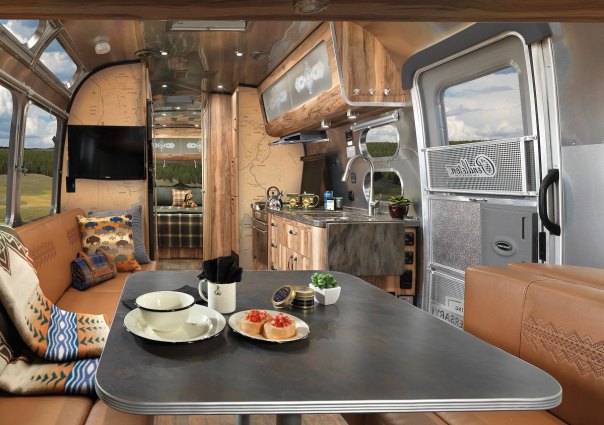
Hotels vary in comfort and practicality, whereas an RV is dependable and customizable. In hotels, mattresses in particular can be worse than the floor on occasions, which is not an issue in an RV.

You can set up any RV or van in whatever way it best suits your needs. There are thousands of models to choose from and unlimited ways to modify them. Your ride and temporary home can be exactly what you want.

When you have to reserve hotels, you need to set up a schedule for yourself, providing a set amount of distance that needs to be covered every day, and limiting your options. With an RV, you can stop wherever and whenever you like, spending more time in places you want to see more of, and skipping the disappointing places. You can improvise, make spontaneous detours, drive all night and get twice as far, and in every way have far more freedom to do whatever you feel like doing whenever you feel like it.

Humans love to hate. Hide it, deny it, try to suppress it–you can’t change it. People fear what they don’t understand, and hate what they fear. On an inconsequential level, consider the phrase “I hate spiders.” Most people don’t hate spiders, just have a little understandable arachnophobia, and are as a result afraid of the creepers. There is an unvarying seed of fear of the unknown in everyone, and fear naturally leads to anger and hate.
Metal gets a lot of hate from many, though not all, mainstream listeners. It’s a highly misunderstood genre, and it gets an unfair reputation. In this case, ignorance is to blame; most metal haters have never listened to good metal before.
Need some proof? I was recently approached by a reasonably nice person who had apparently googled a band who’s shirt I wore. He asked in a genuinely friendly and not at all insulting tone, “you realize your music is trash, right?” A while later, outside of the earlier context, I showed the unsuspecting victim a few songs, starting from Iron Maiden, moving to Pantera, and finally Metallica. His reaction to all three was that it’s pretty good, just not the style he enjoys the most. The latter two are certainly metal, but without being told that, he had to judge the music itself instead of regurgitate his prejudice for the title of the genre, which clearly impacted his opinion heavily.

Metal has been given countless titles such as “pure satanic cyanide” on TV and in other media, and that has ignited a deep-set hatred towards the genre. Everything that’s new and unheard of is resented at first, due to the natural fear of the unknown, but metal has an outstanding amount of haters. The small but significant number of radical satanic bands like Gorgoroth and Behemoth don’t help at all either; they only reinforce the paranoia with their skinned goat heads, self-proclaimed satanism, genuinely evil lyrics, and disturbingly obscene violence on and off the stage. Watch Gaahl of Gorgoroth swirl his wine for minutes after being asked about the meaning of his music before darkly proclaiming “…Satan.” Watch Varg Vikernes of Burzum explain why he burned down churches and how he killed Euronymous of Mayhem. It’s not easy to watch at all. A lot of it is just for the show, though its hard to tell sometimes how serious they are when they have nothing to gain or lose. But the fear this creates is understandable, to say the least.
However, to defend all the extreme black metal fans out there who are not radical psychopath serial killers, consider this: yes, the subjects in the lyrics and the presentation of the bands can be a few steps too far, but that does not apply the people who enjoy it. People watch equally horrible things in horror movies and no one says a negative word about it. People who watch slasher movies aren’t necessarily murderers or even just psychopaths; likewise, people who listen to satanic metal aren’t necessarily radical satanists.

Black metal, just like any other type of metal, is a release of anger and violence in a way that causes no harm. People may blame criminal acts on music, but that is rarely a case–even when the people behind the music, such as Varg Vikernes and Euronymous, may be responsible for horrendous crimes. Judas Priest was blamed for the suicide of two teens in 1985; the teens were intoxicated at the time and led fairly fucked up lives as it is, but accusations of the band placing subliminal messages in their music and preaching it into their minds through a kind of musical hypnosis was apparently considered a more probable cause for their deaths than a normal suicide. The case was eventually dismissed since there was no evidence that these “subliminals” were even possible and because the courtroom was not an ideal location for a debate on the unknown properties of the human subconscious.
More infamously, the self-proclaimed Antichrist Superstar himself, Marylin Manson, was held accountable for the tragedy of the 1999 Columbine shooting. The 13 resulting deaths were attributed in part to the negative influence of violent video games and the music the killers had listened to rather than their own highly unstable psychological state, though the claimed links were never proven. Manson is also widely disliked for his criticism of societal norms and particularly religion, which he thoroughly despises. His villainous reputation is largely due to his views on religion, to which he replied with the now-famous quote, “If they think an artist can destroy their faith, then their faith is rather fragile”–for which he was naturally labeled as a satanist abomination once more.

On the topic of Satanism, that’s another subject that gets a bad rap with little justification. There is radical theistic satanism involving animal or even human sacrifices and obsessive worship of the devil as a supernatural being, and no shit, that’s concerning. But more common, non-theistic LaVeyan Satanism, in theory at least, is not nearly as terrible. It’s actually a fairly reasonable religion as far as religions go, with decent and surprisingly modern philosophies. Legitimate satanists mostly don’t believe in a supreme being at all. Satan is rather a symbol or an idea representing freedom, individuality, and spontaneity–much like Daoism in East Asia, which has been preaching similar philosophies for thousands of years and could not get close to the nasty reputation of satanism. The idea of LaVeyan satanism is to realize that humanity is a very small part of the universe and to accept humans’ place in the animal kingdom, as well as the impossibility of complete harmony and the acceptance of chaos and suffering as a part of life–a lot like Buddhism as well if you consider it that way. The idea that all Satanists worship false idols, make underground sacrifices and perform cult-like rituals is largely just hysterical media-fueled bigoted paranoia. You probably wouldn’t recognize Satanists in normal daily life, because they are just people. Doesn’t sound all that scary anymore, does it?
Regardless, in metal Satan is power, individuality, and an utter rejection of norms. To mainstream audiences, the rampant and uncontrolled chaos of metal shows, the intensely distorted noise, and the offensive and outrageously fucked up lyrics seem to trump the sophistication and musicality that can be discovered under the coarse outer shell. Perhaps it’s for the best that the majority of people are deterred by the first beat–Lemmy said that when rock n roll becomes respectable, its no longer rock n roll, so it can be said that when metal becomes mainstream, it is no longer metal. But to someone who isn’t bothered by the harshness, metal can be so much more than just a genre. The same lyrics that disgust many people appeal to the audiences that need it the most. To fans, the community is a union of outcasts and anyone who can appreciate their music. The symbol of Satan has been an element of metal from its invention with the first true metal song, and will continue to follow the genre wherever it goes, keeping metal extreme and focused on the audience it was invented for and far from the mainstream hit machines.
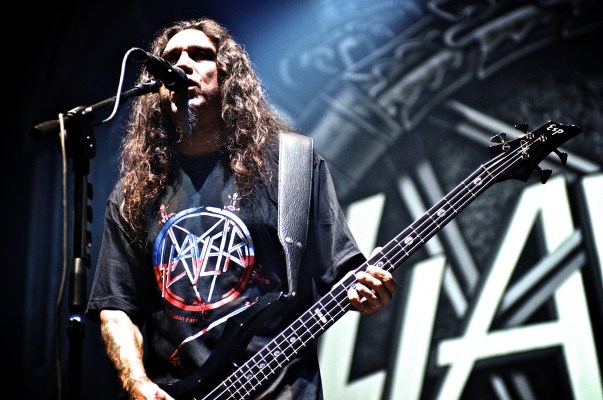

There are few bands that represent the rock n roll spirit more accurately than Motörhead, and it’s not hard to see why. But it can be hard for the casual listener to understand just what the big deal about was; after all, he’s not the best bassist in the world and his voice isn’t all that outstanding either. While all that is undeniable, there are some factors in play that are not usually considered, but were nonetheless important contributors to his rise to fame.
To see this, consider his past. Lemmy started out as Jimmy Hendrix’s roadie (see: We Are The Road Crew) and took advantage of the time to learn guitar. After a short time in a couple psychedelic rock bands in England, he joined Hawkwind as a singer and bassist. Hawkwind was where Lemmy’s unique playing style originated: he was a guitar player and had never touched a bass before, but one show the bassist didn’t show up and Lemmy volunteered to give it a shot. He picked up a bass and learned it on stage. He played it with no respect whatsoever for how it was intended to be played; unlike a respectable bass player, Lemmy plays multi-string chords with outrageous amounts of distortion, just like a guitar, and the result is a unique playing style unlike anyone else’s:
He was kicked out of Hawkwind soon after due to his uncontrollable drug use and formed Bastard, which was later named after the last song he recorded with Hawkwind, Motörhead. It was with Motörhead that he got significant mainstream success, and acquired some of the traits that he is now remembered by, such as his raspy voice, and near-superhuman tolerance for alcohol.
Exactly how Lemmy became the legend he is today is subjective though. Motörhead made great music, which was helpful. Part of it was his unmatched bass style for sure, complimented by his unusual voice and mic position. What sets Lemmy apart from other musicians is that he kept it up for so long. In addition, drinking reportedly over a fifth of whiskey with multiple shots of speed (crack cocaine mixed in heroin, FYI) every single day got him a bit of a reputation. His alcoholism was so extreme it was difficult to interview him after his current hangover passed but before he was working on the next one, and when his manager wanted him to get a blood transfer so he wouldn’t drop dead, he was denied and told that his blood was so toxic it would kill someone. Despite all this, he managed to live to 70 and died of cancer before anything else, performing live just two weeks before his death. He did what he wanted all his life until he absolutely could not anymore, and that, if nothing else, earned him a place among the stars of metal and rock n’ roll alike.
Lemmy’s reputation is not a result of being the best singer or bassist the world has seen. His legacy was carved not because of how well he did what he did, but that everything he did he did in his own unique way and however the hell he wanted, from the drinks to the mic position, and despite living fast all his life he just refused to slow down until the end.

Elvis may be the king, but Lemmy was the god of rock n’ roll.
There are so many amazing places to visit around the world that it can sometimes be hard to choose just one region. This post will help complicate that even further by providing even more destinations all over North America. These aren’t necessarily the best, just a few great ones you don’t want to miss, regardless of whether they’re on top of most people’s bucket lists or if very few people even consider their existence.
Zion is not the most popular park in Utah, but it’s no less scenic than the others and certainly less crowded. It’s landscape is a cross between the nearby Arches NP and the Grand Canyon, but a lot milder than the latter in terms of climate. It’s ideal for hiking, offering a wide variety of hikes for any skill and effort level, from the easy but stunning Riverside Walk to the famously treacherous Angel’s Landing.
Places to see: Angels Landing (tricky hike, great view), Checkerboard Mesa (just off the highway), the Narrows (if you don’t mind getting wet).
These two are so near one another and that they can be considered a single park, since a multi-day trip to the area would surely include parts of both. This huge section of the Canadian Rockies is known for its bright blue alpine lakes, numerous trails for day hikes or extended backpacking trips, and the multitude of wildlife that inhabits the region, including bears, lynx, cougars, wolverines, moose, reindeer, and bighorn sheep. It’s ideal for camping in the spring and summer if you’re okay with having to hide your food from bears, and snow sports in the winter.
Places to see: Moraine Lake, Peyto Lake, Lake Louise, Johnston Canyon, Medicine Lake, Maligne Canyon, Columbia Icefield, Sunwapta Falls, Pyramid Mountain.
Half Dome is easily the most iconic location in this park, but there is much more to the park. From waterfalls to valley overlooks to camping to climbing, this park has it all. Overlooks off the highway offer sweeping views of the glacial valleys, while hiking trails take you right through them. If you’re feeling more adventurous, you can take on climbing one of the cliffs or peaks, or raft down the river that flows through the glacier’s path along the bottom of the valley.
Places to see: Half Dome, Yosemite Falls, Tuolumne Meadows, Cathedral Peak, Glacier Point, Vernal Falls, Mariposa Grove, El Capitan.
This huge Alaskan park encompasses a wide variety of terrain, including tundra, evergreen forests, grasslands, snow-capped mountains, and glaciers. The wildlife is unique and especially abundant. You can find grizzlies, black bears, wolves, moose, reindeer, elk, bighorn sheep, eagles, and much more. Your options are almost unlimited, and no one visit to the park will be enough to discover everything worth seeing. Hiking is a good option of course, on or off the trails. There are bus tours around the park, as well as plane tours over the more inaccessible areas. Camping and backpacking in Denali is an unforgettable experience, although bears can be an issue. Camping in a van or RV is easier of course, but the roads limit where you can go. Whatever you decide to do, remember that it is huge and it is wild; you don’t want to get stranded if you miss the shuttle.
Places to see: Mt. McKinley (you don’t need to climb it to see it), Savage River (established trail but lots of wildlife), Mt Healy Overlook (short climb, great view).
Yellowstone is a two-faced park: on one side are immeasurable amounts of raw, untamed landscapes, spectacular natural scenery, and diverse wildlife; on the other side are literally millions of tourists, many of which are willing to ruin everyone else’s experience, as well as the park itself, for little more than a selfie. It is one of, unfortunately, many parks where some tourists have no respect whatsoever for the place and the wildlife. However, while avoiding the crowds can be tricky, if you can manage it it’s certainly worthwhile. There are too many great places in Yellowstone to include in one brief list, but check out my Yellowstone Travel Guide for suggestions, tips, and useful information. If you’re done with that, here’s another helpful post on making the best of a trip to Yellowstone.
Just a quick project from last week. Clips from the Lord of the Rings: The Two Towers and Return of the King edited over Avenged Sevenfold — Hail to the King.
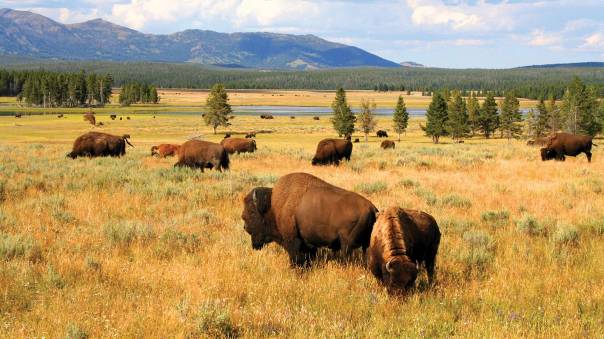
Yellowstone can be a difficult park to enjoy, to say the least. With nearly five million visitors a year, most of them in July and August, there are often just so many people that the popular and famous attractions are impossible to enjoy during daylight hours.
This raises the much-discussed question of how it is best to go about visiting the park. Some claim that winter is the best option, as tourism is at its lowest and many roadside attractions, such as Grand Prismatic Spring and Mammoth Hot Springs, become infinitely more enjoyable. While stories that claim that you will have the whole park to yourself are a little far-fetched and unlikely, there are for sure much fewer people for sure.
An unavoidable downside is that most of the park–generally around 95%–is very literally closed off and inaccessible by car or by foot. Rangers simply don’t have the resources to devote time and effort into cleaning up the roads and trails from snow enough to be used, and instead simply close them off for the winter. That means that while the famous attractions will be more accessible, everything else will be blocked off and you will be trapped on the roadside locations, unable to see the wilder side of the park. That is not to mention the temperature and the snow gear required for even the shortest of hikes, which only add to the problems with that solution.

Another common idea is to explore at dusk and dawn, thus avoiding the majority of tourism. However, this is not advisable practice for a number of reasons: first off, when would you sleep? And second, what do you intend to do during the day? The obvious solution is to sleep a few hours during the day and the night and be awake for a few at dusk and dawn, but that’s extremely problematic, as you would have much less time in each “day” or iteration, and your sleep cycle would be so disrupted by this unorthodox schedule, combined with possible jetlag, that you would very likely end up too exhausted to function within the first 48 hours. Unless you are okay with doing nothing for most of the day, that’s hardly going to work out.

There is another possibility though, and while it might sound unappealing at first, it can be the most rewarding option. The idea is to make the sacrifice of skipping popular places like Old Faithful and Mammoth Hot Springs, and instead go out farther into the wilder areas of the park, avoiding the masses and exploring places you won’t find in travel guides or road maps.
Typically, in Yellowstone if a place can be driven through or there are short boardwalk loops, it’s full of people. However, hiking trails over a mile long are generally much more solitary, as a surprisingly low percentage of people take the time to actually go on a longer hike. Often, the most rewarding hikes aren’t on maps or even recommended online. Small, random trails on the side of the road typically lead to something interesting, and they can be much more enjoyable than well-used trails in popular regions of the park.
Yellowstone is littered with geothermal features and wildlife hotspots, and the well-known ones are only a small sample. Arguably the best way to experience Yellowstone is to take chances and visit the more reclusive areas, driving headfirst into wilderness directly away from the masses. It takes some luck to find the best places, but it’s unlikely that the search will be fruitless. What very few people seem to grasp is that Old Faithful and Grand Prismatic are not what makes Yellowstone such a spectacular park–it’s the thousands of rarely explored places that offer the unexpected, be it a colorful geothermal pool or a face-to-face encounter with a pissed of moose, that make up the experience.
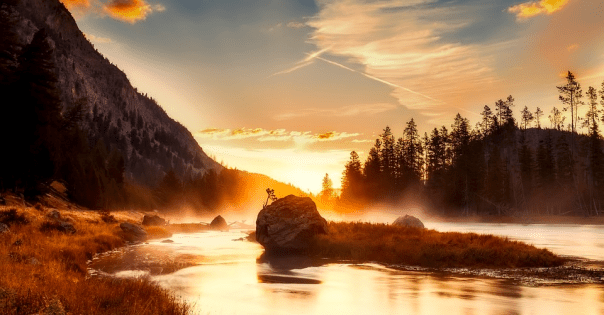
Check out my Yellowstone Travel Guide for more tips, suggestions, and recommendations.

Yellowstone is a very complicated place to enjoy. In some ways it’s a can’t-miss, and in other ways, it’s just not for everyone. You might go there for the bears or bison, but you will be encountering a very different and much more dangerous breed of animal a lot more often: humans, and a damn lot of them.
Thankfully, there are ways to get around the crowds, but it does take some skill and risk. If you do choose to visit, here are a few things you should know.
Wildlife is one of the main reasons so many people flock to the park, and you’re almost guaranteed to have some encounters. There is a lot of wildlife, which sounds good. It comes with its responsibilities though–animals might be so used to people they act fearless, but it’s still not a good idea to get in their face.
You’ll surely see bison, moose, elk, deer, and the occasional eagle. Wolves are extremely shy of people and you would have to get very lucky to actually see them, although their howls are not a rare occurrence at night.
As far as dangerous animals go, wolves rarely get close to people and bears are shy as well. Moose are very often underappreciated and underestimated, as are bison. While unprovoked attacks are extremely rare from any animal, bear spray (and the ability to use it) is necessary for hiking the wilder areas of the park. However, the large animals are not the most dangerous. Snakes can be venomous and hard to spot, although staying on trails can solve that problem. Bug spray comes in handy and in some places can save you from hundreds of bites in one hike from mosquitoes, biting flies, ticks, and many other varieties of bloodsuckers.

Weather can be unpredictable. Precipitation is spread surprisingly evenly in the year, so rain is not unusual even in the hottest months. It gets pretty cold too–sub-zeros in the winter and often down to the 40s even in the hottest months. Be prepared for any weather, and make sure an unexpected rainstorm won’t mess with your plans.
You might be surprised to learn that if you intend to stay inside the park at one of the 9 lodges, you’ll have to book at least a year in advance, preferably more. They are always full, and you would have to be very lucky to catch a cancellation. However, there are hotels outside the park that are somewhat less busy, if you don’t mind a few hours’ drive every day.

Speaking of driving, getting around in the park takes longer than you probably plan, due to traffic, narrow roads, viewpoints that are certain to make you stop along the way, and wildlife-induced traffic stops. Also keep in mind that there is very little cell and no internet in the park, so don’t plan to rely on your GPS–download a map instead and make sure to keep track of where you are.
There are a lot of roads in the park, but the two main routes are the Upper Loop, which passes Mammoth Hot Springs, Lower and Upper Falls, and Norris Geyser Basin, and the Lower Loop, which passes Old Faithful, Upper Geyser Basin, Lower Geyser Basin, Gibbon River, Yellowstone River, and West Thumb Basin. The South entrance offers a scenic way of entering the park.
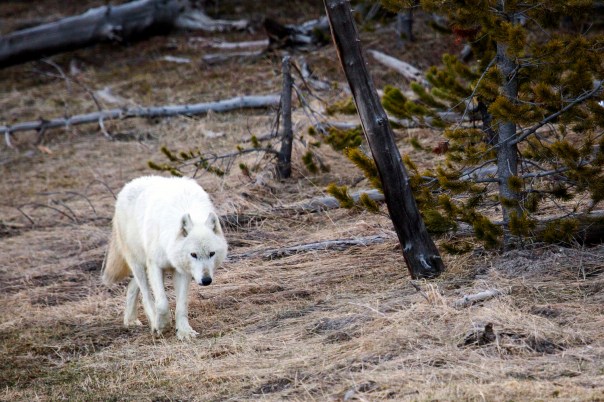
Most roads are closed in the winter and open in May, which presents a problem: there’s hardly a manageable offseason. If you are able to, it’s always smart to avoid the most crowded months, regardless of where you are going. For Yellowstone though, that’s close impossible, since 95% of the park is literally closed off in the offseason–and even if that doesn’t bother you, there’s still a lot of snow to manage.
This limits your reasonable options to either May, right as the roads open, or late August and September, as the season is ending. Either way, there’s always the risk that the snow will take longer than usual to melt or start falling earlier than expected, cutting into some or all of your trip. It’s a risk to consider.
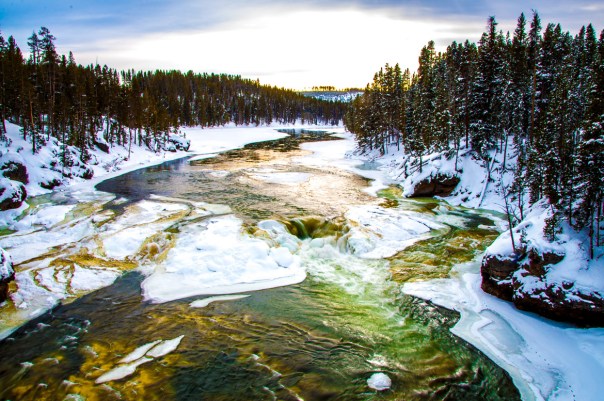
Visiting in the winter is possible, though it can be difficult. Although your options may be limited, there are significantly fewer people during the winter, so your experience may even be better than the other option. It’s a very different experience, and it can be much more enjoyable. However, be ready for road closures, snowstorms, and temperatures well below freezing that may interfere with plans, or even keep you out of the park entirely. It’s risky but possible.
Whatever you do, avoid July and August. The weather and insects can be extreme, and it’s by far the worst in terms of crowds, so much of the park is impossible to enjoy without the other few million people there.
For more extensive tips on when and how to ditch the masses, check out my in-depth article on the topic.

There are of course a lot of great places to go, but many of the most obvious ones aren’t on that list. There is one reason for that, and that is the crowds. With over 4 million people visiting the park every year, you will get tired of driving at 2 mph staring at the next car’s stupid vanity plate, only to finally get out and have all the other tourists engulf you in a cloud of sweat-smell, push at you and shove elbows in your ribs to get a better view and stop to pose for selfies every two steps.
While it’s certainly famous, consider skipping it. It only erupts every 36-120 mins and the sheer amount of people standing and sitting around block the view. Unless you go at dawn, there is no chance you will be left alone. In the winter though, it’s a lot easier to enjoy.
It’s one of the most photographed places in the park, and for a good reason. However striking it may be though, the crowds confined to the narrow, boardwalk can ruin the experience in minutes. Once again, winter is an entirely different experience.
This is mostly a drive-through attraction, so the traffic can clog up very easily. Often you will find yourself at an indefinitely long dead halt, as somewhere ahead of you someone spotted wildlife and stopped to stare. However, there really is a lot of wildlife, and since you’ll have some guaranteed elbow room in your car, it’s not a terrible option if you’re okay with incomprehensibly hopeless traffic jams.
While the hot terraces, springs, mud pots, and other limestone features are certainly interesting, the limited boardwalks and seemingly unlimited amounts of people can very easily ruin the experience. Unless you visit in the winter, when not much else in the park is open, it will be difficult to enjoy, much like Grand Prismatic Spring.
Despite the ridiculous crowds in some sections of the park, there are areas that the general masses typically don’t get to, but are just as interesting to see.

West Thumb is a relatively small basin compared to others in the park, and it’s generally not a common tourist destination, so it won’t be too crowded. It’s certainly worth seeing though; among its abundant geothermal features are geysers (Lake Shore Geyser, Twin Geysers), hot springs (Blue Funnel Spring, Surging Spring), and geothermal pools (Abyss Pool, Black Pool, Bluebell Pool, Seismograph Pool) with stunning colors, situated conveniently right on the shores of Yellowstone Lake, which is also worth checking out.
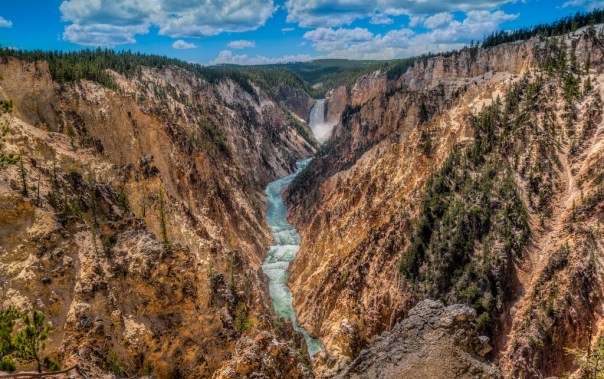
While it’s often listed as a hike, Artist Point is 0.2 miles from the road with a 16 ft elevation gain, so it’s more of a viewpoint from the highway. Point Sublime is 1.5 miles from the road and offers similar views with fewer people. They are certainly worth a stop, as they offer sweeping views of the Grand Canyon of the Yellowstone River.

This “hidden” hike gets so little traffic most people don’t even know about it due to it’s discreet location marked only by one sign reading “Wolf Lake” and it’s absence on most road maps–which is exactly why it’s worthwhile. In addition to the falls, Ice Lake is also in the area, and if you hike an extra few miles, Wolf Lake isn’t much of a stretch either.

Two Ocean Plateau received its odd name–given that its hundreds of miles from the nearest ocean–because all the water to the West of it drains into the Pacific, and all the water on the East drains into the Atlantic. While that’s not noticeable when you’re there, the picturesque marsh and views of Yellowstone Lake are the opposite.

Given that it’s situated almost 3 miles from the parking lot, there are refreshingly few people at this geyser. The hike is mostly flat and partially paved, following the Firehole River. The geyser erupts only every three hours, but there are plenty of other unnamed geysers and hot springs in the area to explore while waiting. There’s a log book at the parking lot where hikers write down the time of the previous eruption so you’ll know roughly what to expect.
In broad daylight in peak season, Yellowstone is extremely crowded. If you’re lucky, you may be able to get around the crowds, but the park’s permanent residents have little choice. Both animals and tourists are sometimes so unafraid of each other that people will get out of their cars and approach animals as if neither poses a threat to the other. If the animal doesn’t like that, it’s not the tourists who get shot by the rangers, sadly.
It’s not just on the roads where stupid people can cause damage; things like getting off the trail or boardwalk in areas where there are signs explicitly saying not to can permanently damage the environments–or the people, in the case of the guy who boiled to death in a hot spring a few years ago after leaving the boardwalk.
Tourists who think they’re in a zoo or amusement park do stupid and selfish things. It happens all the time and there is little to do about it, but that doesn’t make it any better. If you want to avoid it, stay away at tourist season. If you want to change it, sue away. But whatever you do don’t be one of them.
